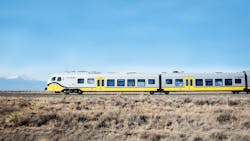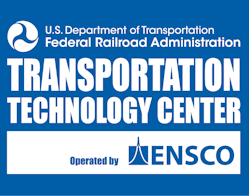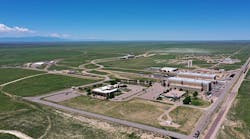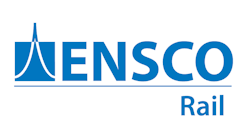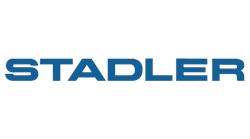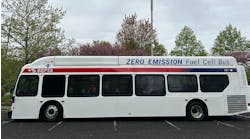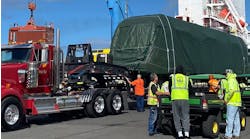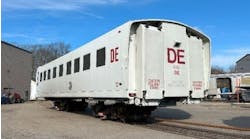In the dynamic world of passenger rail transportation, the Transportation Technology Center (TTC) in Pueblo, Colo., emerges as a critical resource for cutting-edge testing and validation of the latest passenger train technologies. Operated by ENSCO since October 2022, the facility offers an unparalleled environment for the rigorous assessment of new passenger rolling stock prior to their deployment in various transit systems, commuter railways and intercity services. This article explores recent operational testing achievements at the TTC, focusing on significant milestones with the Stadler FLIRT Diesel-Multiple Unit (DMU) trainsets for Dallas Area Rapid Transit (DART) and the pioneering hydrogen-powered Zero Emission Multiple Unit (ZEMU) train destined for the San Bernardino County Transportation Authority (SBCTA).
Operational excellence in testing: Stadler FLIRT DMU for DART
The TTC has long been revered as the ideal setting for exhaustive qualification testing of new passenger trains, offering a controlled, isolated environment that ensures thorough attention to safety and reliability without disrupting existing transit operations. This attribute was vividly illustrated with the arrival of Stadler's DART DMU trainsets to the TTC in fall 2022. The testing of the DMU at the TTC not only marked the first passenger trainset to be evaluated at the newly revitalized center under ENSCO's stewardship, but also symbolized the commencement of a new chapter for TTC in serving the future needs of the passenger rail industry.
The DART FLIRT DMUs, featuring a diesel-electric configuration with a focus on high passenger comfort and efficient operation, underwent extensive testing phases. This included static and dynamic evaluations covering brake and traction performance, noise levels, electromagnetic compatibility and onboard train control systems testing. The TTC's vast 52-square-mile facility, boasting 50 miles of test tracks, provided an optimal environment for these comprehensive assessments. Among these tracks is the Rail Transit Track (RTT), a 13.5-mile high-speed loop with a maximum speed of 165 mph and equipped with AC catenary. Additionally, the Transit Test Track, another 9.1-mile loop with a maximum speed of 90 mph and equipped with third rail and DC catenary, further facilitated continuous testing of the trainsets with dedicated track access and simultaneous testing for other customers.
Throughout the testing program at the TTC, the Stadler DMU and its team were accommodated in the Passenger Rail Services Building (PSB), a three-bay, 46,000-square-foot depot specifically designed for supporting passenger car testing at the TTC. The trainset and team also received support from TTC staff and equipment for vehicle maintenance activities during testing, including the loading and unloading of sandbag ballast into the DMU to simulate passengers. In addition to the PSB, there are three other depot buildings utilized for passenger trainset testing:
- The 19,400-square-foot Urban Rail Building
- The 7,700-square-foot Transit Maintenance Building
- The 38,800-square-foot Center Services Building used for conducting heavy vehicle maintenance and equipped with two 30-ton cranes and machine shop.
Testing at the TTC included brake and traction performance, noise testing, Electromagnetic Compatibility (EMC) testing and train control testing for onboard equipment. Brake and traction performance tests were conducted on the TTC’s high-speed test tracks to ensure the DMU met essential operational performance and safety requirements. This is key to perform at the TTC as opposed to on a transit’s revenue tracks so that revenue service is not impacted and Stadler had free control to make the test runs needed and allow time for adjustments to the vehicle. Similarly, noise testing is performed on the high-speed test tracks to confirm that the noise inside and outside of the vehicle meet expectations to ensure comfortable experiences from passengers and the public.
EMC testing ensured the DMU does not emit at-risk electromagnetic signals that could interfere with electronic infrastructure equipment and ensuring the DMU itself is not susceptible to anticipated outside electromagnetic interference. This is particularly important for the DMU’s train control system to ensure it operates in anticipated electromagnetic conditions without issue.
Additionally, the Stadler DMU was featured in the TTC 50th Anniversary Event on Oct. 25, 2022. During this event, attendees enjoyed a historic ride on the Stadler DMU around the TTC’s largest test loop, the RTT, symbolizing the beginning of a new era for the TTC.
Pioneering the future: Hydrogen-powered MU train testing
In parallel, the TTC has played a pivotal role in advancing the green transportation agenda through the testing of the United States' first off-wire zero-emission passenger train – Stadler's Hydrogen-Electric Multiple Unit the FLIRT H2 for SBCTA. Amidst a growing environmental focus and the urgent need for sustainable transportation solutions, the FLIRT H2 project represents a significant leap towards reducing greenhouse gas emissions in the rail sector. Utilizing hydrogen fuel cells for propulsion, the FLIRT H2 showcases the potential of hydrogen as a clean, efficient alternative fuel, aligning with the nation’s decarbonization goals.
The FLIRT H2 combines hydrogen fuel cells and batteries to propel the vehicle. Electrical power is generated by combining hydrogen with oxygen in on-board fuel cells. During operation, the FLIRT H2 emits only water vapor, resulting in zero carbon emissions. When hydrogen is produced using green methods, the entire system can achieve zero carbon emissions.
The hydrogen train, comprising two cars with a power module in-between housing the hydrogen tanks and fuel cells, accommodates 108 passengers with generous standing room and can achieve a maximum speed of up to 79 mph. It is expected to start operation as part of Metrolink’s Arrow service between San Bernardino and Redlands, Calif., in 2024.
Arriving at the TTC in 2023, the SBCTA Zero-Emission Multiple Unit (ZEMU) underwent testing encompassing both static and dynamic phases, evaluating its acceleration, deceleration, maximum speed, brake performance and, crucially, its operational service with zero-emission capabilities. The specialized tracks at the TTC facilitated thorough examinations of the FLIRT H2 performance in various operational scenarios.
Both Stadler and ENSCO prioritized proper fueling operation and storage at the TTC during the testing program. The team successfully sourced and fueled the hydrogen trainset, with ENSCO establishing a roadmap, in collaboration with partners, for short-term solutions and a longer-term plan to establish a permanent hydrogen fueling station and conduct ongoing hydrogen transportation research and testing at TTC.
The North American railway industry needs alternative green energy sources such as hydrogen trains to meet increasing sustainability requirements. The TTC is proud to support the first U.S. hydrogen passenger train testing and is ready to support all future research and testing needs to enable a safe and sustainable transportation future.
Supporting safety, sustainability and security
The role of the TTC, as evident by the testing of both the Stadler FLIRT DMUs and the FLIRT H2, extends beyond the validation of trainsets' technical specifications. It represents a commitment to fostering innovation in passenger rail transportation, ensuring that new technologies are safe, reliable and aligned with future sustainability targets. ENSCO's operation of the TTC has injected fresh momentum into this endeavor, broadening the scope of transportation modalities that can be tested and thereby supporting the industry's evolving needs.
Moreover, the TTC's support for the hydrogen fuel initiative, through the establishment of a roadmap for fueling operations and future research, underscores its role as a catalyst for the adoption of green energy solutions in rail transportation. This aligns with the broader industry and governmental objectives to decrease dependency on petroleum fuels and mitigate environmental impacts.
In addition to safety and sustainability, the TTC has launched the Center for Critical Infrastructure Protection (CCIP). Leveraging ENSCO’s cybersecurity expertise, CCIP supports passenger transit cybersecurity needs, including penetration testing (pen-testing) of rolling stock. A unique capability of CCIP at the TTC is its ability to perform pen-testing in a safe operating environment without affecting revenue operations of a passenger transit or railway. As cybersecurity concerns continue to rise, testing the on-track service worthiness and cybersecurity resilience of new rolling stock becomes increasingly essential.
Conclusion
The TTC stands at the forefront of technological advancement and sustainability in the rail industry. Through its comprehensive testing capabilities, the TTC is not only validating the operational readiness of innovative trainsets like the Stadler FLIRT DMU and the ZEMU, but is also playing a pivotal role in shaping the future of safe, secure and sustainable passenger rail transportation. As the TTC continues to support and facilitate these advancements, it reaffirms its essential position within the industry, ensuring the safe, efficient and sustainable movement of passengers across North America's rail networks. Additionally, in the new era of the TTC, it now has the directive to expand its mission beyond rail and include all modes of surface transportation.
